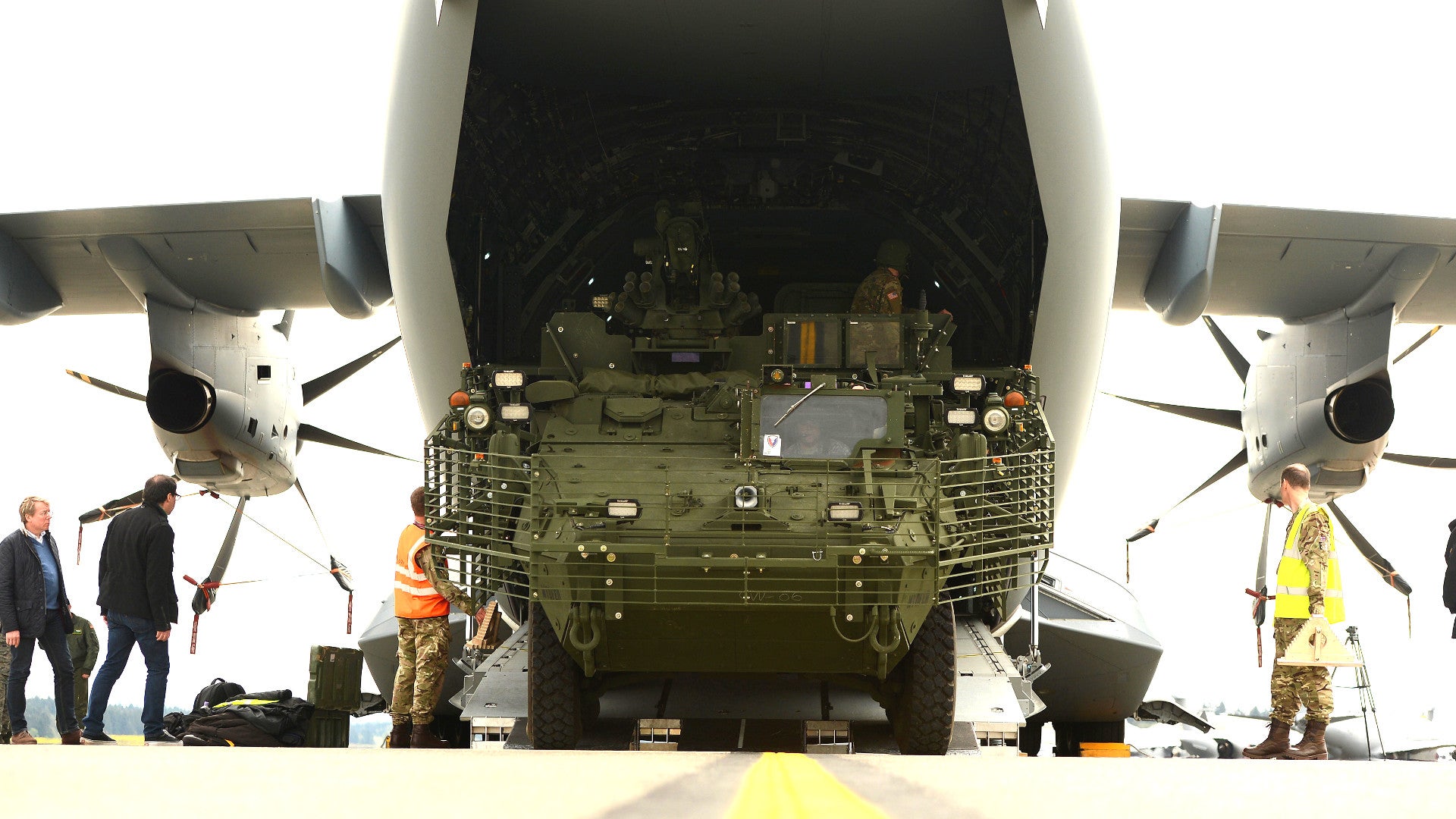One of the U.S. military’s greatest strengths is its ability to rapidly move personnel, equipment, and supplies anywhere they might need to go. Airlift is a critical part of that power projection capability and now the U.S. Air Force has kicked off the inaugural iteration of its new premier training exercise, Mobility Guardian, along with nearly two dozen allies. The event is a more operationally focused replacement for a long-standing tradition of air mobility competitions between American and foreign partners.
On July 31, 2017, approximately 3,000 American personnel, along with more than 650 members of foreign military forces, began the drills at Joint Base Lewis-McChord (JBLM) in Washington State. According to Air Mobility Command (AMC), which is leading the event, the nearly two weeks of drills will focus on its four “core competencies” of airlift, air refueling, aeromedical evacuation, and air mobility support.
“We’re creating an exercise that will encompass everything AMC does,” Air Force Lieutenant Colonel, the director of Mobility Guardian, explained. “We basically took every skill set from AMC and said, ‘what would the ideal exercise for each of our different mission sets look like?’ Then we combined them all into one.”
The Air Force’s airlift and aerial refueling units have been especially busy in recent years, supporting expeditionary operations against ISIS terrorists in Iraq
and Syria. The service’s tankers have offloaded fuel into both American and other coalition warplanes, while personnel on the ground have ferried other forces, along with critical gear and supplies, around an ever expanding network of more established bases and remote forward sites.
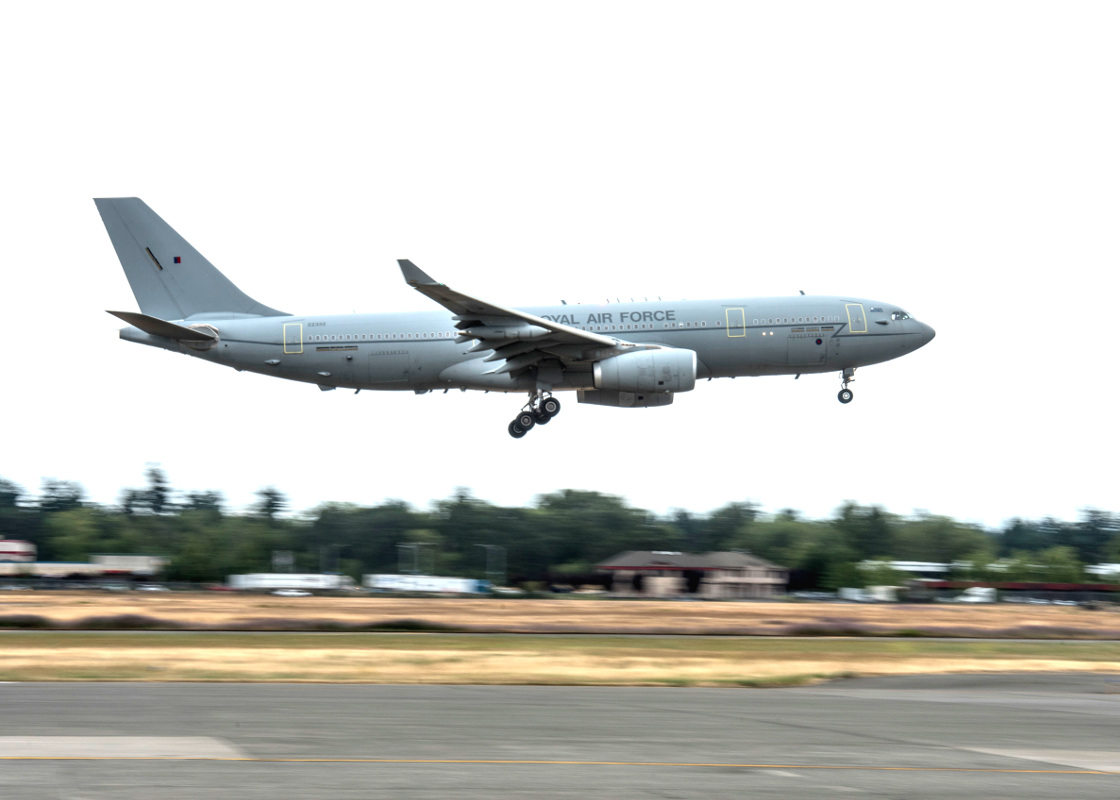
In addition, similar missions continue to be important for continuing operations in Afghanistan, including a recent surge in airstrikes in support of Afghan forces and the U.S.-led coalition in the country. In Africa, a host of counter-terrorism missions
and associated facilities likely could not function without Air Force support.
On top of that, other units elsewhere in the world have been essential to an increasing schedule of training exercises and other events, including those aimed at deterring Russian aggression in Europe, responding to North Korean provocations, and promoting freedom of navigation in South China Sea and East Sea. The U.S. military has similar commitments in Latin America and Africa that require regular airlift support.
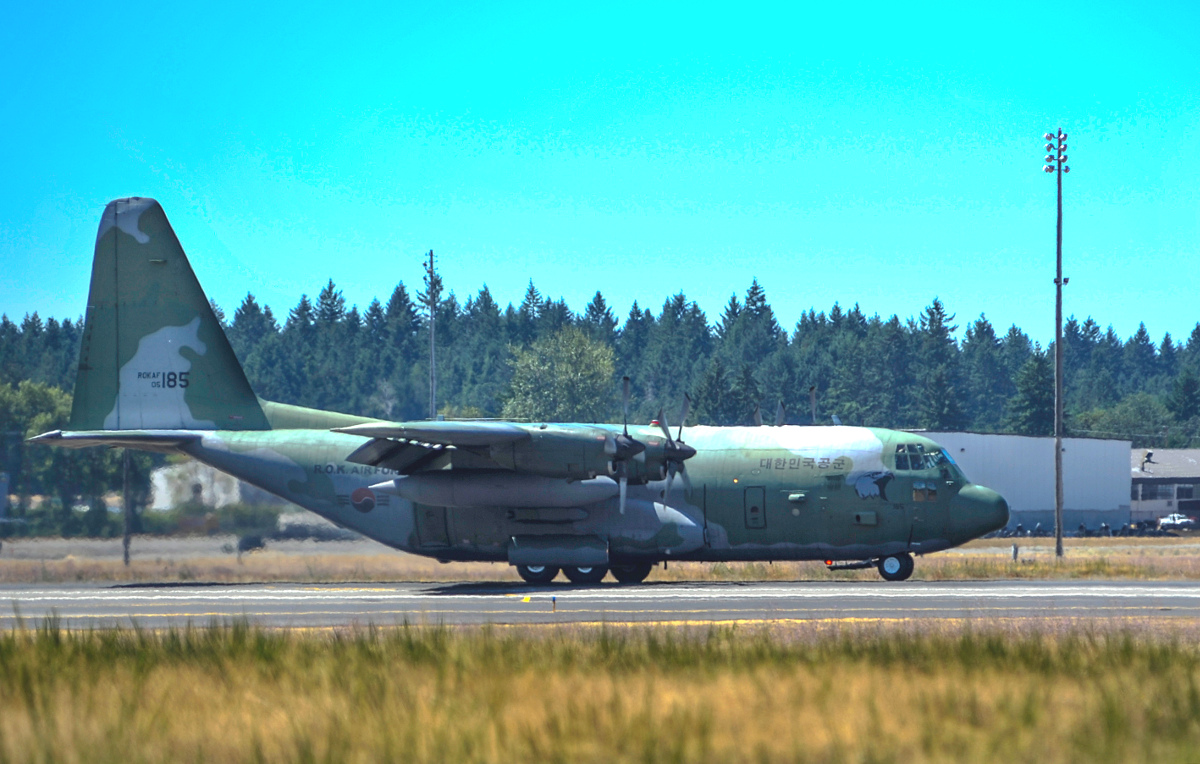
In many of these instances, the Air Force works directly with foreign partners either in the air or on the ground. The service’s personnel are often situated at allied bases in host countries, requiring regular and smooth interactions to make sure missions occur on schedule. In some cases, the airlift and tanker support go straight to foreign forces or international missions, including those run by the United Nations and the Africa Union, where the United States may not otherwise be an active participant.
“I have not deployed anywhere or gone anywhere in my duty as an airlift pilot where there was not an international presence,” Air Force Colonel Clinton Zumbrunnen, who is coordinating the international observers, said.
So it’s imperative that AMC’s units not only be on top of their own skill sets, but that they also be able to work closely with allied elements that may speak different languages or have different standard operating procedures. At least 10 countries – Australia, Belgium, Brazil, Canada, Colombia, France, New Zealand, Pakistan, South Korea, and the United Kingdom – are full participants that the Air Force has worked directly into the exercise plans and many of them have brought their own aircraft. Other countries have sent observers who will team up with American personnel during the drills to learn how U.S. personnel perform their missions.
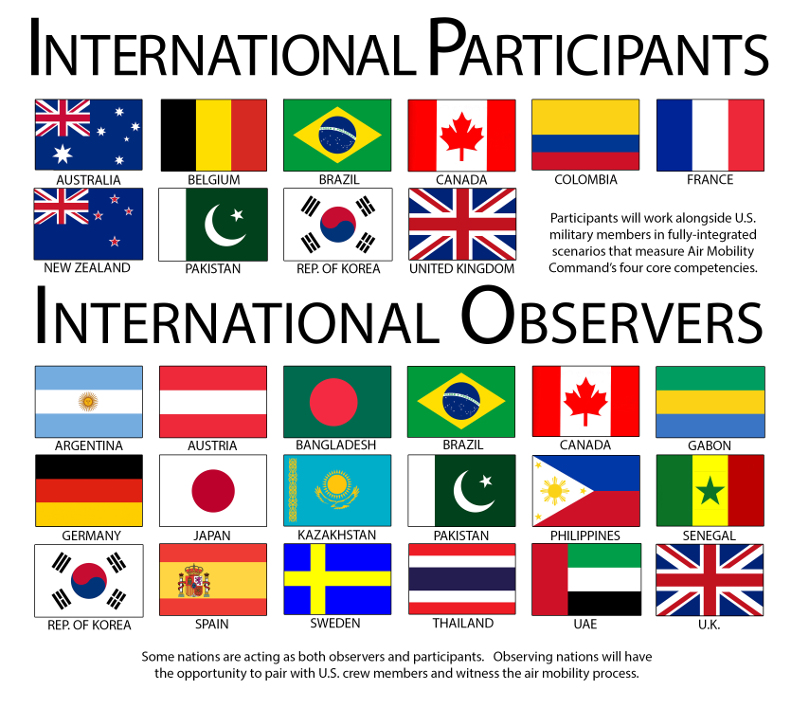
The Air Force appears to have designed Mobility Guardian specifically to focus on these information exchanges through a series of realistic and complex scenarios. There will be at least one formation flight with aircraft from the United States, Brazil, and Colombia. Other events will require operating at night with night vision goggles or flying at low levels. The actual training will touch on everything from combat operations to disaster relief.
Perhaps most notably, members of the so-called “Five Eyes” – the United States, United Kingdom, Australia, Canada, and New Zealand – will conduct a mock “forcible entry,” which will involve air drops and air landings to deliver personnel and equipment into a “semi-contested” area with a simulated enemy presence. U.S. Army airborne units – possibly including the Alaska-based 4th Brigade Combat Team, 25th Infantry Division and special operations forces situated on the West Coast – will support this and other phases of the exercise.
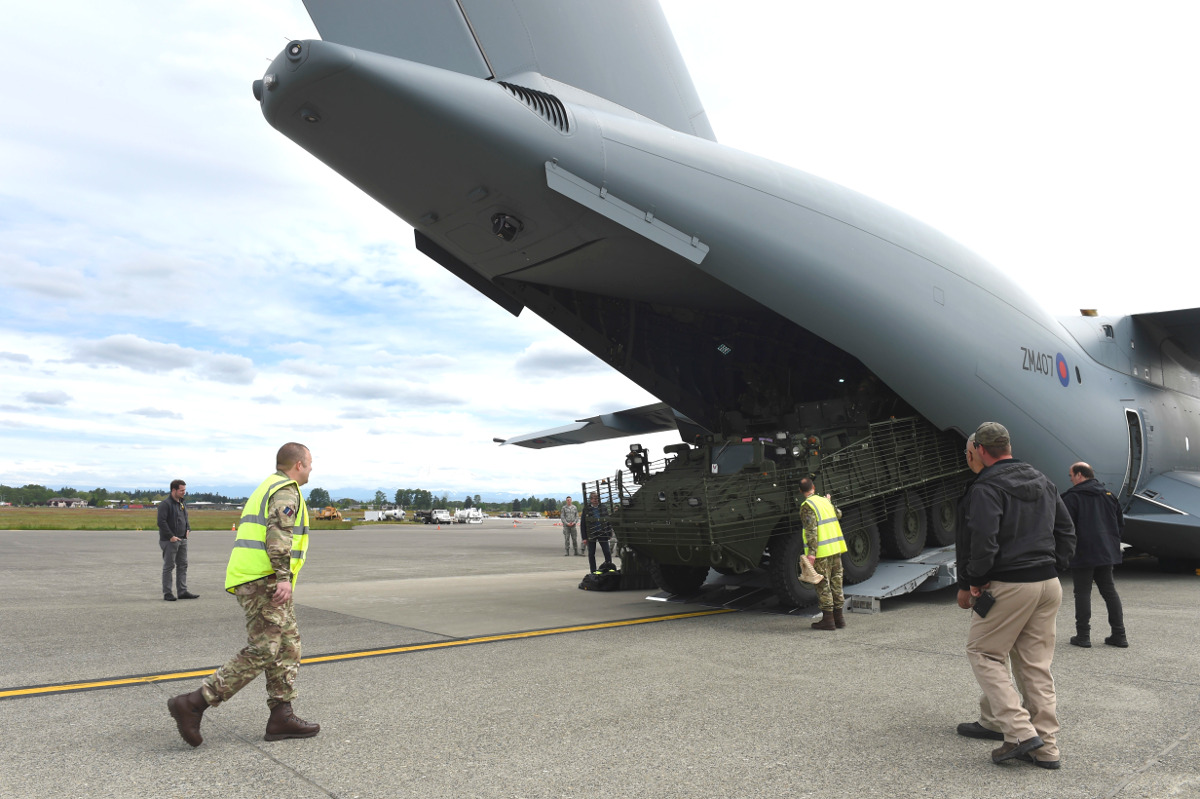
“We’re pushing the tactical edge,” Air Force Major Thomas Rich, who is serving as the director of operations for the Mobility Guardian exercise task force, told the service’s reporters. “We’re putting aircraft from different nations close together in a tight air space in a dynamic threat environment. There’s a little bit of inherent risk in that, but that’s what we want to do here so that everybody is ready when we do it for real.”
Mobility Guardian is new, but is also a direct evolution of previous drills dating back to the 1950s. However, these were largely organized as competitions, first among Air Force units themselves, and then with foreign partners, as well. This ultimately evolved into the Air Mobility Rodeo in 2005, which was a biennial event. However, AMC had not organized one of the gatherings since 2011.
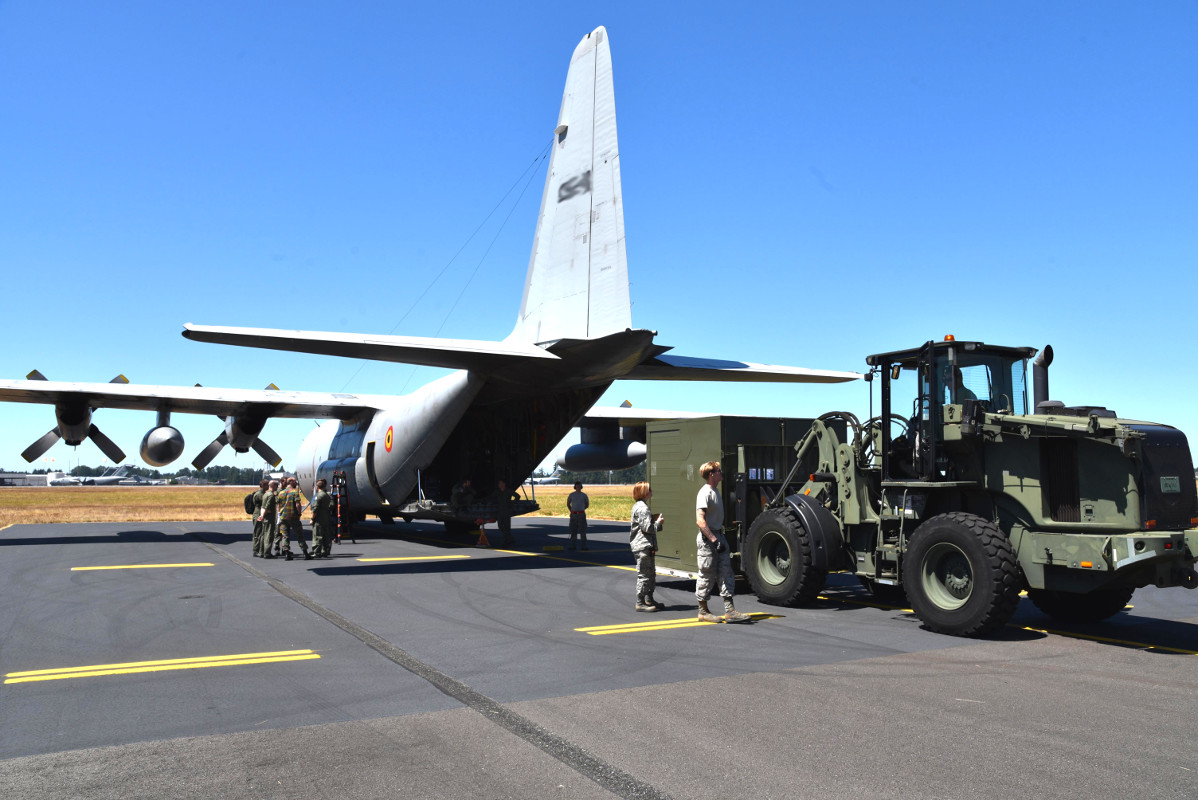
In 2013, due to budget cuts and operational demands, the Air Force scrapped the Rodeo for that year. Two years later, the same issues forced the service to cancel the exercise again. The service’s plan for Mobility Guardian plan was to integrate more realistic scenarios rather than simply have competitive events in order give participants an experience more focused on their actual training needs.
This way the Air Force could continue the tradition, but not take personnel away from performing or actively preparing for their core missions. Like the previous Air Mobility Rodeo, the hope is that Mobility Guardian will be a biennial event. Whether or not the event will continue to grow is unclear. The new exercise is already larger in scale than the previous Rodeos and involves hundreds more personnel.
“Mobility Airmen are often the first to arrive and the last to depart,” U.S. Air Force General Carlton Everhart II, head of AMC, said ahead of the start of the exercise. “Exercising our capabilities together is critical so when we are called upon, we can deliver quickly and precisely.”
Mobility Guardian looks set to be an important part of making sure AMC and its partners can perform their missions seamlessly where ever and when ever necessary.
Contact the author: joe@thedrive.com
